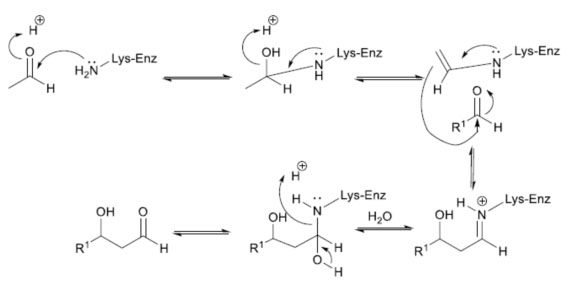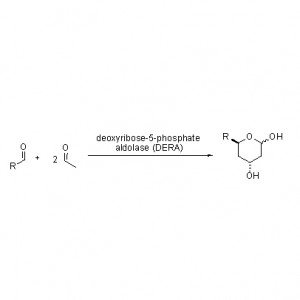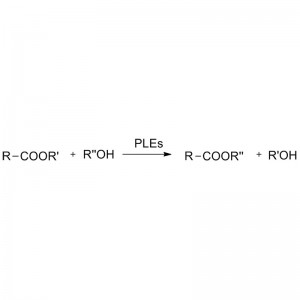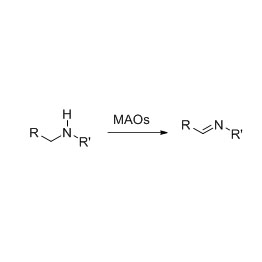Aldolase (DERA)
There are 8 kinds of aldolase products (Number as ES-DERA-101~ES-DERA-108) developed by SyncoZymes. SZ-DERA is a useful tool to catalyze enantioselective carbon-carbon bond formation, generating up to two chiral centers under mild reaction conditions.
Catalytic reaction type:

Catalytic mechanism:


| Enzymes | Product Code | Specification |
| Enzyme Powder | ES-DERA-101~ ES-DERA-108 | a set of 8 Aldolase, 50 mg each 8 items * 50mg / item, or other quantity |
| Screening Kit (SynKit) | ES-DERA-800 | a set of 8 Aldolase, 1 mg each 8 items * 1mg / item |
★ Broad substrate spectrum.
★ High conversion.
★ Less by-products.
★ Mild reaction conditions.
★ Environmentally friendly.
➢ Normally, the reaction system should include substrate, buffer solution (optimum reaction pH) and the ES-DERA.
➢ All kinds of ES-DERAs corresponding to various optimum reaction conditions should be studied individually.
➢ The ES-DERA should be added last into reaction system to maintain the activity.
➢ High concentration Substrate or product with may inhibit ES-DERA’s activity. However, the inhibition can be relieved by batch addition of substrate.
Example 1 (1):

Keep 2 years below -20℃.
Never contact with extreme conditions such as: high temperature, high/low pH and high concentration organic solvent.
1. Haridas M, Abdelraheem E, Hanefeld U, e tal. Appl Microbiol Biot, 2018, 102, 9959–9971.









